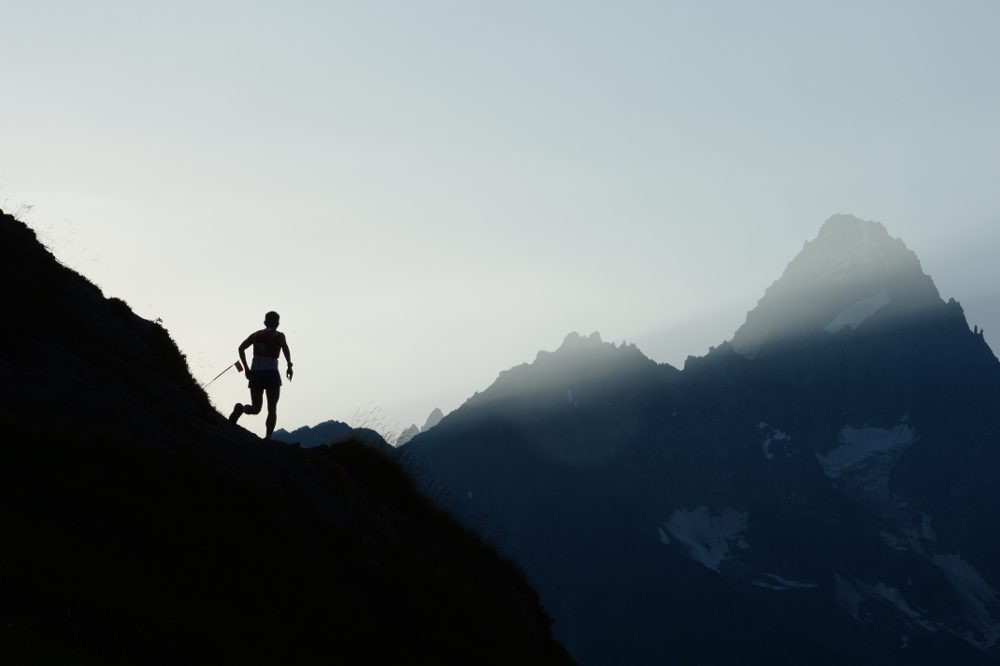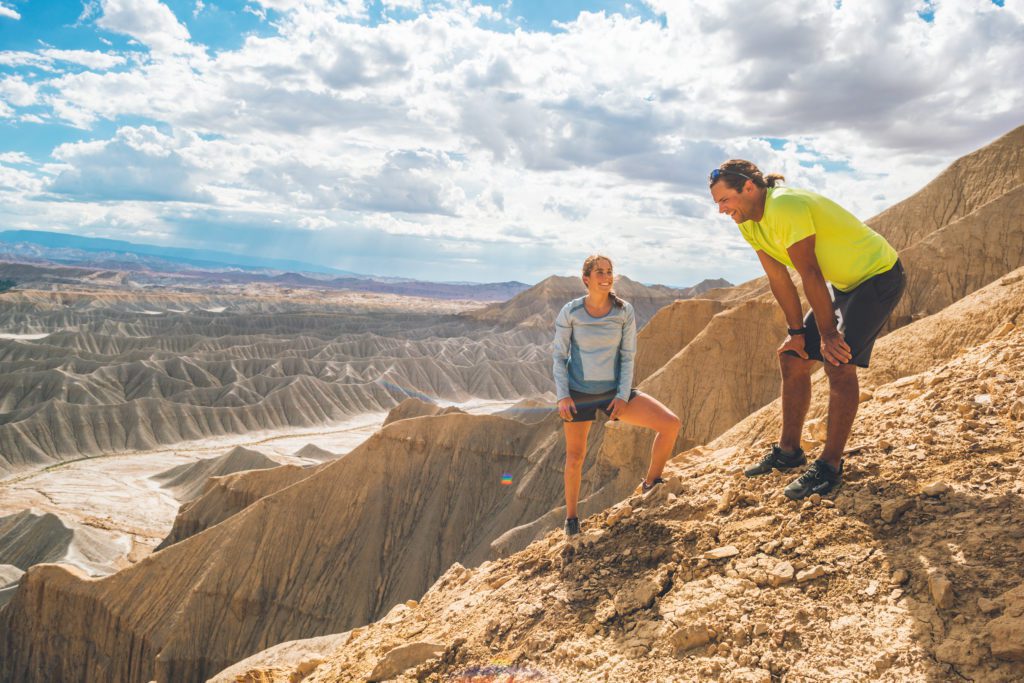
The transition from road running to trail running is one thing. Mountain running is a completely different experience with its own set of challenges. From what to wear to how to prepare, here is what you must consider when tackling mountain runs and races.
RELATED: Selecting a trail shoe: six things to look for
Weather
As we all remember from public school geography, mountains come with changeable weather, usually involving sudden precipitation and dramatic temperature changes. Protective gear is a must, and knowing what to pack comes with experience. You’ll want to balance the need for warmth and dryness with the ability to remove and carry layers.
That means appropriate base layers, such as Columbia’s Midweight Stretch long-sleeve shirts. You may also need sunblock and UV-resistant clothing, such as Columbia’s Solar Chill shirt, which uses the company’s innovative Omni Shade™ Sun Deflector technology to keep you cool, protected, and comfortable in sunny conditions. (The shirt comes in short- and long-sleeve options.)
For those colder altitudes, Columbia’s Trail Summit fleece-lined running gloves for men and women feature the brand’s Omni-Heat Reflective technology, to keep you warm while preventing overheating.

Footwear
You need a particularly sturdy shoe to run up and down mountains. Keep in mind that although you may spend a certain amount of time power-hiking on ascents (especially if new to mountain running), you still want to move quickly, so you want a shoe that combines protection and stability with lightness, preferably a dedicated mountain running shoe. The best type of shoes for mountain running have a wide toe box to allow for toe splay on the descents, and substantial outsole lugs to give you a good grip on the ups and downs.
RELATED: What to pack for a 50K trail race

Altitude
Be aware of the altitude wherever you’ll be running, not just where you start, but also how high you may ascend during the run. Acclimatization may be necessary, considering the effects of altitude can be felt as low as 1,600m above sea level. If time to acclimatize is not available, remember to descend as quickly as possible, and know you will feel better as soon as you can reach a lower altitude.
Up high, the weather can change quickly. You’ll want a lightweight, packable shell that you can get on and off with ease – something like Columbia’s Omni-Freeze Zero Titan Lite II windbreakers for men and women. It won’t add much weight but in worst-case scenarios a jacket like this could be essential.
RELATED: How Hardrock 100 runners prepare for altitude
Hiking poles
Ultrarunner Adam Campbell suggests that for mountain races of more than 50 miles (80K), or with more than 4,000m of elevation change, hiking poles are very useful, but getting the hang of them takes practice. That means using them repeatedly on training runs if you plan to use them in a race. “Basically if you’re going to be hiking the climbs, poles help a lot,” says Campbell. “But only if you’ve practised with them.”
Collapsible or telescoping poles for trail running are typically available in aluminum or carbon. Carbon fibre poles are lighter, but may be more vulnerable to breakage. Also be aware that aluminum is a conductor, so avoid using aluminum poles in a thunderstorm.

Hydration Pack
A hydration vest that doubles as a backpack is an excellent investment for mountain runners. The most versatile models have both a bladder and pockets for water bottles, and capacity varies.
RELATED: What to pack for a 50K trail race
